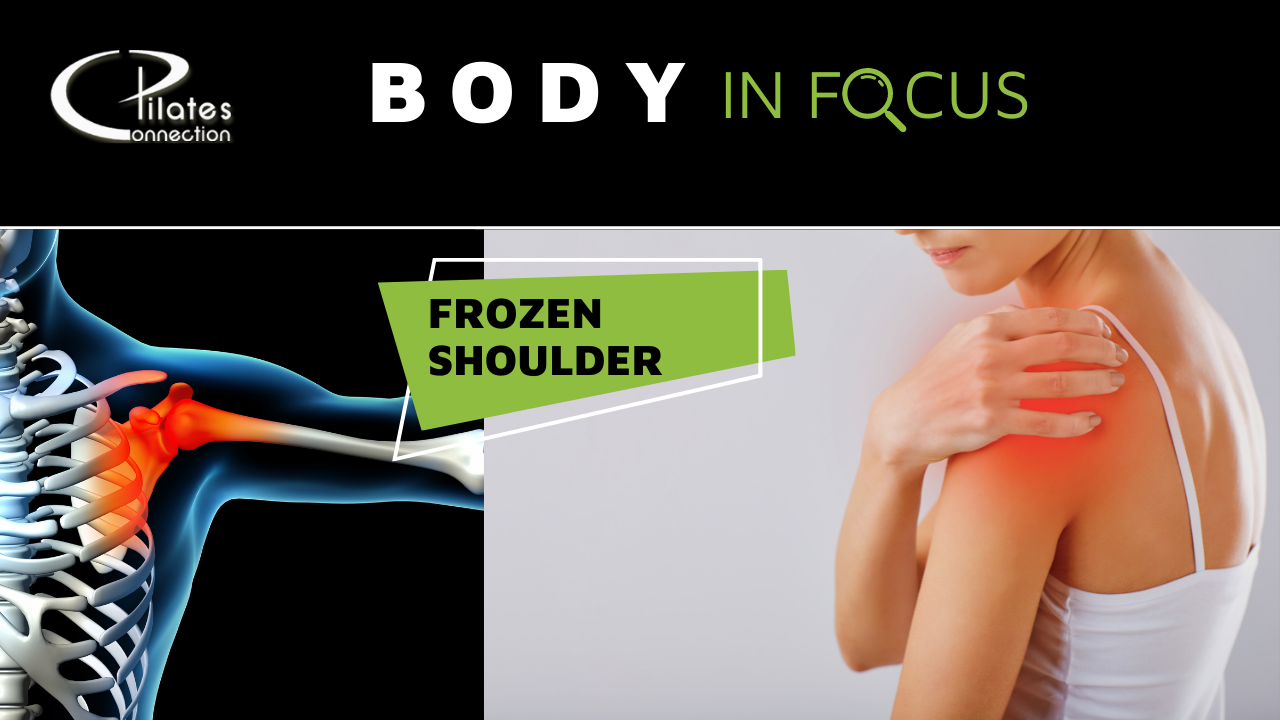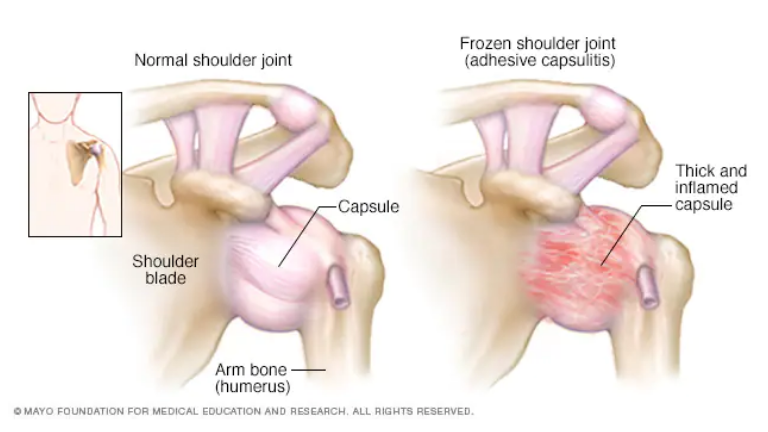
Body in Focus – Frozen Shoulder
Posted on May 25, 2022
What exactly is Frozen Shoulder and who’s most likely to get it?
Also known as adhesive capsulitis, Frozen Shoulder is a condition characterised by stiffness and pain in your shoulder joint. Signs and symptoms typically begin gradually, worsen over time and then resolve, usually within one to three years. The bones, ligaments and tendons that make up your shoulder joint are encased in a capsule of connective tissue. Frozen shoulder occurs when this capsule thickens and tightens around the shoulder joint, restricting its movement.

Doctors aren’t sure why this happens to some people, although it’s more likely to occur in people who have diabetes or those who recently had to immobilize their shoulder for a long period, such as after surgery or an arm fracture. People over the age of 40, particularly females, are more likely to have frozen shoulder.
Symptoms of Frozen Shoulder
While suffering from Frozen Shoulder, you may experience any or all of the following symptoms:
- Pain: Maybe sharp and radiate into the whole arm. Can be present when resting and during movement.
- Loss of function: Activities such as eating, dressing, and driving can be challenging to carry out.
- Stiffness: Movement of the shoulder can be severely restricted.
- Sleep: Sleep may be disturbed when lying on the affected side of the shoulder or while changing the sleeping position.
How long does it last?
Frozen Shoulder typically presents in three stages, and can last anywhere from a few months to a couple of years:
- Freezing Stage: The shoulder becomes increasingly painful, and you slowly lose range of motion. This usually occurs over 6 to 9 weeks.
- Frozen Stage: This stage immediately follows the freezing stage and is usually less painful though the stiffness remains. This typically lasts roughly 4 to 6 months making daily activities very difficult.
- Thawing Stage: This stage is where the shoulder slowly improves with either a complete return to normal or close to normal strength and motion. This usually takes anywhere from 6 months to 2 years to happen.
What treatment options are available?
Treatment for a frozen shoulder is focused on relieving pain and restoring the shoulder’s normal range of motion and may typically include:
- Anti-inflammatory medication to help manage pain
- An ice pack or bag of frozen vegetables applied to the shoulder for 10 to 15 minutes several times a day may also help with pain relief.
- In severe cases, your doctor may recommend a corticosteroid injection into the shoulder joint or soft tissues.
- However, the cornerstone of treatment is physical therapy, concentrating first on exercises that stretch the joint capsule, and later, on strengthening exercises.
We see many clients in our studio presenting with Frozen Shoulder, and generally create a tailored program containing gentle mobilisation exercises, which we believe are the best form of treatment for this often painful condition. If you have Frozen Shoulder and are looking for a physical therapy program, we can help you right here in our studio under close supervision. Alongside learning how far to push yourself, and your body’s limitations, we will also teach you exercises to continue at home, between classes. Please get in touch if you’d like to find out more.
Here are a couple of mobilisation exercises for Frozen Shoulder, demonstrated by Liane.



Sorry, the comment form is closed at this time.